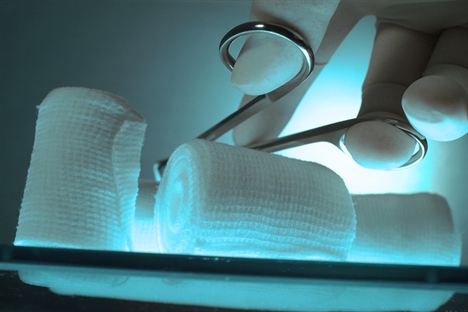Research identifies potential new treatment for sepsis
Sepsis is the leading cause of in-hospital death and there is no specific treatment for it. Now, research led by Dr. Qingping Feng of Western University (London, Canada) suggests a protein called recombinant human annexin A5 may have therapeutic potential for the treatment of this disease. The paper is published in advance, online in Critical Care Medicine.
Sepsis is caused by an overwhelming immune response to an existing infection. It’s estimated there are 18 million cases annually worldwide. The mortality rate is 30 to 40 per cent for severe sepsis and 40 to 80 per cent for septic shock. Dr. Feng, a professor in the Departments of Physiology and Pharmacology, and Medicine at Western’s Schulich School of Medicine & Dentistry and a scientist at Lawson Health Research Institute is particularly interested in how sepsis causes cardiac dysfunction.
Annexin A5 is a lipid-binding protein produced by cells. Using mice with induced sepsis, Dr. Feng, Dr. Xiangru Lu, and Paul Arnold, MSc, studied the effects of annexin A5 on cardiac function and animal survival.
“We treated the septic animals and to our surprise we found a dramatic, significant effect in improving cardiac function during sepsis and improved survival rates in the mice,” says Dr. Feng. “We also found it helped even if administered hours after the septic infection. This is important because the delayed treatment simulates what usually happens in a clinical setting. The patient often has had sepsis for several hours, or a few days when they seek treatment.”
Annexin A5 is not currently used as a therapeutic agent, but its safety has been tested in humans. It’s currently used in imaging studies to identify cells undergoing apoptosis (cell death).
While this study looked at the heart, Dr. Feng believes annexin A5’s beneficial properties could apply to multiple organs including liver, lungs and kidney, all which can all be affected by sepsis.
Treatment of severe sepsis will vary for each patient depending on the initial infection, the organs affected and the extent of damage.
If your sepsis is detected early enough and has not affected organ or tissue function (uncomplicated sepsis), it may be possible to treat the condition at home. You will be prescribed a course of antibiotic tablets.
If the sepsis is severe, or you develop septic shock, you will need emergency hospital treatment, usually in an intensive care unit (ICU). ICUs are able to support any affected body function, such as breathing or blood circulation, while the medical staff focus on treating the infection.
Antibiotics
 Severe sepsis is treated with intravenous antibiotics (given directly into a vein). There will not usually be time to wait until a specific type of infection has been identified, so ‘broad-spectrum’ antibiotics will initially be given. Broad-spectrum antibiotics are designed to work against a wide range of known infectious bacteria, and can also treat some fungal infections.
Severe sepsis is treated with intravenous antibiotics (given directly into a vein). There will not usually be time to wait until a specific type of infection has been identified, so ‘broad-spectrum’ antibiotics will initially be given. Broad-spectrum antibiotics are designed to work against a wide range of known infectious bacteria, and can also treat some fungal infections.
Once a specific bacterium has been identified, a more ‘focused’ antibiotic can be used. This has the advantage of reducing the chance of the bacteria becoming resistant to antibiotics.
Intravenous antibiotics usually have to be given for 7 to 10 days.
If the sepsis is caused by a virus, antibiotics will not work. However, it is likely that antibiotics will be started anyway. This is because it would be too dangerous to delay antibiotic treatment until an accurate diagnosis is made. You will then need to wait until your body develops resistance to the effects of the virus. In some cases, antiviral medication may be given.
Source control
Source control means treating the source of the infection, such as an abscess or infected wound. This may require draining pus from infected tissue. In more serious cases, surgery may be required to remove the infected tissue and repair any damage.
Vasopressors
Vasopressors are medicines used to treat low blood pressure. The two types of vasopressors used in the treatment of sepsis are dobutamine and noradrenaline.
They can help to increase blood pressure by stimulating the muscles involved in pumping blood around the body and constricting (narrowing) the blood vessels.
Vasopressors are normally given intravenously. Extra fluids may also be given intravenously to help increase blood pressure.
A patent for this discovery has been filed by WORLDiscoveries®. The Canadian Institutes of Health Research helped fund the research.
###
Kathy Wallis
kwallis3@uwo.ca
519-661-2111 x81136
University of Western Ontario